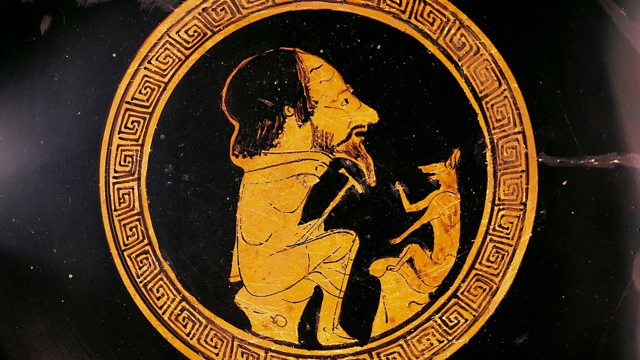Aesop and the Fables
The ‘Hare and the Tortoise, the ‘Wolf in Sheep’s Clothing’…Aesop’s Fables have remained hugely popular for over two and a half thousand years. Why?
Aesop, with his tales of tortoises and hares, foxes and grapes, and wolves in sheep's clothing has been a part of world literature for over two thousand years. Since the time of the Ancient Greeks successive generations have drawn moral lessons from his fables, and over history his animals' exploits have been used to support differing ideals. Malcolm X was a fan, as was Imperial Britain, the Nazis had their version and the Trade Union movement published the fables too. There are over 700 fables, and they are supposedly written by a black slave far clever than his philosopher master.
Bridget Kendall traces the origin and meaning of Aesop's fables and explores what they can teach us about understanding our own extraordinary times with three world experts: Edith Hall, Professor of Classics at Kings College London; Vayos Liapis, Professor of Theatre at the Open University of Cyprus; Dan-el Padilla Peralta, Associate Professor of Classics at Princeton University.
(Image: The fox telling Aesop about animals, decoration from a Greek vase, 5th century BC, Vatican Museums. Credit: De Agostini Picture Library/Getty Images)
Last on
More episodes
Previous
Broadcasts
- Thu 28 May 2020 09:06GMTÂ鶹ԼÅÄ World Service
- Thu 28 May 2020 23:06GMTÂ鶹ԼÅÄ World Service
- Sun 31 May 2020 13:06GMTÂ鶹ԼÅÄ World Service East and Southern Africa & West and Central Africa only
- Sun 31 May 2020 14:06GMTÂ鶹ԼÅÄ World Service except Americas and the Caribbean, East and Southern Africa, South Asia & West and Central Africa
- Mon 1 Jun 2020 03:06GMTÂ鶹ԼÅÄ World Service
Featured in...
![]()
Politics, philosophy and faith—The Forum
Ideas, people and events that shaped cities, nations and civilisations
![]()
Classic literature: Reading between the lines—The Forum
From Moby Dick to the Moomins, exploring the books that captured the world's imagination
Podcast
-
![]()
The Forum
The programme that explains the present by exploring the past




